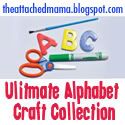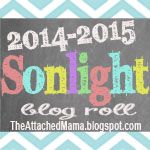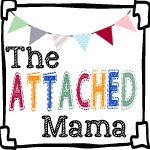When it came time to teach my children how to read, I did a
LOT of research on the various theories, methods, and products available to teach
reading.
One product that I
liked right away was
The Reading Lesson.
The Reading Lesson is a complete reading program created
especially for young children.
Before
beginning the program, children need very little prior knowledge of the
alphabet or phonics.
Everything is taught within the
context of the lesson.
Lessons are
also taught in a way that makes learning to read very simple.
In other programs I have tried,
they make learning to read very complicated.
Children are expected to memorize long lists of phonics
rules—and then
all of the exception to these “rules” that we have in the
English language.
Children
will not need to do that in
The Reading Lesson.
Yet, they
somehow manage to give a very thorough introduction to phonics without making
it so complicated.
Overview of the Program:
I think it is important for the parent to read the
introductory material at the beginning of the book. Don’t skip over this material! It is short, well written, and very much “to the
point”. This material also gives
suggestions on how to keep children motivated during their reading lesson, and it
provides pacing suggestions for children of various ages.
The book is divided into 20 different lessons. However, each lesson will most likely be
spread out through multiple days (or even weeks). Parents are instructed to move through the book at their
child’s individual pace.
Another thing you will notice right away in
The Reading Lesson is the unique use of font size throughout the book.
In the beginning of the book, the font
size is very large, and there is a lot of blank, negative space on the
page.
My son (5 years old at the
time we went through these lessons) very much appreciated this aspect of the
book!
It made it so that his
little eye muscles didn’t have to work so hard when learning to read.
It also allowed him to easily complete
several pages at each lesson with very little “work”—which gave him a sense of
confidence.
As you continue on in
the book, the font gradually (and very slowly) becomes smaller and
smaller.
There is also more text
on the pages as you continue on.
This is one thing I found VERY unique
about
The Reading Lesson.
I have
yet to see that in any other “learn to read” book.
The next thing you will notice about
The Reading Lesson is
the unique use of symbols and marks on the letters.
For example, many young children struggle with telling
“b” from “d” when first learning to read.
So, beginning in lesson 5 when the letters “b” and “d” are both used,
they put a little dot inside of the letter b so students can easily tell that
letter apart.
Again,
my children really liked this!
I
was initially worried that they would become overly reliant on these little
marks when telling letters apart.
I was worried that once we removed the dots, they would not be able to
tell the letters apart anymore.
However, a year later, my children now very seldom mix those two letters
up even without the special dots.
So it wasn’t a problem.
 |
| Notice how the letter "b" is uniquely distinguished between the letter "d". |
Another symbol that you will notice are the little lines
under the letters.
This is suppose
to provide a reminder to children about which letters they need to make the
sound of when reading.
Another
unique feature of
The Reading Lesson is that consonant and vowel blends (such
as “th” and “ee”) are taught VERY early on.
The children
are also introduced to “silent” letters right away (example:
the silent “e” common at the end of
words.)
These lines are
there to remind children which letters make their individual sounds, which
letters need to be blended together, and which letters are silent.
Words are introduced and reviewed over
and over again with these “helping” markers.
(There is
a lot of built in review which I
appreciated.)
After awhile,
most children will no longer have to “sound the word out” and will eventually
be able to read the word by sight.
At that point, the “helping” symbols are eventually removed, and the
words are written normally.
At the end of each lesson they give you
a list of “key words” that your children should be very familiar with before
moving on.
This list is sort
of a warning that after this point, these words won’t be written with a bunch
of “helping” markers.
This was extremely helpful.
I knew that if my kids were not fluently
reading these words, I should go back and review the previous lesson before
moving on.
 |
| Notice the lines under the different letters and consonant blends. |
The final thing you will notice right away about this book are the cute black and white line drawings throughout the book. Right away kids see that this is a book made for them! I didn't see that in other "reading program" books on the market. They were mostly just dry, pages full of text. Some kids will also enjoy coloring these drawings in when they finish a page in their reading lesson.
What a typical day was
like teaching this lesson:
The thing I like MOST about
The Reading Lesson is how easy
it was to teach.
It requires next
to no prep work.
It is very easy
to open up the book and just start using it.
Typically, what I would do is pour myself another cup
of coffee, and invite my kids to come and sit with me on the couch.
The book itself would guide me through
any teaching that was required.
If I happened to be starting a new lesson that day, I would
very quickly read the one page introduction to the lesson before I called the
kids over. The introduction to the
lesson tells you which letters or letter combinations will be introduced. It also guides the parent
on how to properly pronounce the sounds of these letters or letter
combinations. (It is VERY
important to make sure you are properly pronouncing the phonemes when teaching
a child how to read.)
I was teaching two kids how to read simultaneously, so my
children would then take turns reading directly from the book. (All teaching and student work comes
directly from that single book.) My
kids had about a 10-15 minute attention span when it came to a reading lesson,
so we would typically get through 2-3 pages per day. This was exactly the pacing suggestion given to us at the
start of the book.
My Bottom Line:
I compared
The Reading Lesson thoroughly with other
reading instruction books on the market within this same price range.
(My comparisons included some of the
most popular reading instruction books available
including:
Teach Your Child to
Read in 100 Easy Lessons ,
The Ordinary Parents Guide to Teaching
Reading,
Reading Made Easy, and
Phonics Pathways.
The simple fact of the matter is that
all of these books are going to give your child a solid foundation when it
comes to reading.
These books are
popular for a reason.
HOWEVER---I
found that only
The Reading Lesson made learning to read a bit more fun
for the child.
(Many of those
other books were
extremely dry and
felt like a huge chore for the kids to get through.)
I also found
The Reading Lesson to be extremely easy to teach.
I have never
taught a child to read before—however, I was able to do so successfully with
only this book.
This book required
no teacher prep and was able to accomplish a huge amount of instruction in just
10-15 minutes per day.
So what is my bottom line? When it comes to finding a reading program under $30,
The Reading Lesson is by far the best product out there in that price range.
Extras:
The same company, who makes
The Reading Lesson, also
provides these other products for sale.
Some parents may want to supplement the Reading Lesson with these
optional books, DVDs, and CD-ROM s.
Here is my quick “review” on these “extras”--
Letter Sounds DVD--
This DVD (which runs approximately 44 minutes long) teaches children the
basic sounds of the letters of the alphabet.
Parents can optionally use this DVD before or during
The
Reading Lesson.
My thoughts:
This DVD was nice.
However, I personally prefer the Leap
Frog learning DVDs for teaching this information.
The Reading Lesson Animated CD-Rom-
There is also an animated CD ROM
available which walks you through every lesson in the original
The Reading
Lesson book.
Children
who like being on the computer may prefer this method of instruction over the
book (or along side the book).
This certainly isn’t an
essential item to own, but it is a nice addition to the program.
(I should note that we are a mac
family and had no problems getting this CD to install and run.
I can’t say that about a lot of educational CD-ROMs!)
The Storybook CD-ROM-
Another cute supplement to the program is the Storybook CD-ROM.
It contains 40 animated short stories
for your child to read.
The
animations do a nice job of keeping the child interested and motivate them to practice reading.
My children also enjoyed the
“clickable” words if they got stuck.
Again, I wouldn’t say this product is essential to teaching your child
how to read.
You can do the exact
same thing by simply checking early readers out of the library and helping them
with words they get stuck on.
However, children who like being on the computer, might be more motivated to practice reading with this product. This
product is also nice because it follows the same letter-sound introduction used in
the lessons.
(It is nearly impossible to find other readers that follow the exact introductory order used in The Reading Lesson.)
The Writing Lesson-
The Writing Lesson is an inexpensive handwriting program which
corresponds to the lessons in
The Reading Lesson.
If your child is ready to learn handwriting
when you are teaching them to read, you may want to get this product as a
supplement.
This product comes on
a CD, and gives you a plethora of writing exercises to chose from.
Parents are able to print just what
they need
and as many copies as they need for children in their family.
The CD contains three different scripts
(primary, script, and cursive). It also contains activities that work
on forming of all upper and lower case
letters, common words, and even stories.
So this single product could potentially provide handwriting practice
for an entire family from grades 1
st-4
th grade!
Big Words For Little Kids: Advanced Vocabulary for Elementary School Children--
This book teaches children specific strategies for figuring out
the meaning of unknown words they encounter in their reading.
In this book, they systematically
teach children to break familiar words into their individual parts (prefixes,
suffixes, and roots)….then transfer the meaning of those parts to new
words.
I personally really liked
the approach used in this book. I have never seen a book like this written to the level of elementary aged students. I plan to add this into our language arts
program down the road.
The Verbal Math Lesson-- There are two levels of these books
which provide a step-by-step math program for children.
The first level is meant for children
ages 4-7, and the second level is meant for children ages 7-8.
As the title implies, these books attempt to teach math completely verbally….
without paper and pencil.
So obviously, this program might be a good fit if you
have a child who does well taking information in while listening.
If your child has poor receptive
language skills, they are not going to do well in this program and may need a
more visual or “hands-on” program instead.
As far as the quality of this program, I can see
using this with a preschool or kindergartner who I wanted to gently introduce
to math.
Many children this age do
not have the fine motor skills to complete the more typical “worksheet” based math
programs on the market.
As far as
for older children (in the 7-8 year old range), I personally wouldn’t feel
comfortable using this as my
only math program.
I
would definitely use this book
to supplement another math program.
I found the book to contain some fantastic word problems and
activities.
---
Disclosure: The products reviewed here were given to me free of charge in exchange for my HONEST review. I was not obligated in any way to provide a favorable review. These are my actual opinions of the product.







